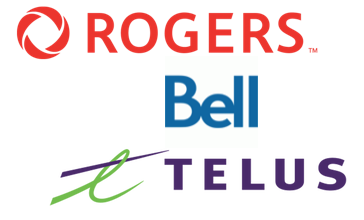
Canada’s 5G Networks Struggle Big Time vs The World

In an in-depth analysis by Opensignal, Canada’s position in the global 5G race has been highlighted as “struggling” due to a critical shortfall in mid-band spectrum allocation.
Despite having some of the fastest 4G download speeds among OECD countries, Canada’s transition to 5G is struggling due to insufficient spectrum bandwidth, says the report.
Opensignal notes that while Canada excels in 4G bandwidth, leading to superior download speeds in that category, the leap to 5G is a different story. The primary reason for this disparity is identified as the limited use of the 3.5GHz band, which is crucial for 5G connectivity, and smaller 5G spectrum bandwidths.

Key findings from the report reveal that Canada’s 5G download speed is only 2.4 times faster than its 4G speed. This ratio is significantly lower when compared to countries like Israel, where 5G speeds are 8.4 times faster, followed by Chile at 7.8 times, Mexico at 6.9 times, and South Korea at 6.5 times.
Moreover, Canada’s utilization of the 3.5GHz band for 5G stands at 27.7% of Opensignal’s 5G readings, which is one of the lowest among OECD countries. In contrast, nations such as Israel and South Korea nearly exclusively use the 3.5GHz band for 5G.

The analysis also points out that Canadian telecoms mainly depend on the 1700/2100MHz band for 5G, which does not offer the same level of performance.
Also, only 1.8% of 5G readings in Canada utilized spectrum bandwidth exceeding 100MHz, which is essential for optimal 5G speeds. This is a big change from 23 other OECD members, where more than 10% of 5G readings operate on this wider bandwidth, with Austria and Sweden leading with over 30%.
When it comes to 5G spectrum auctions, the federal government has been slow as molasses.
“The initially low amount of spectrum assigned to Canadian operators in the 3.5GHz frequencies, compared to other leading 5G markets, is one of the reasons why operators in Canada do not use this band for 5G connectivity as often as their counterparts in other markets,” says Opensignal.
“The Canadian government assigned only 200MHz of spectrum in the 3.45-3.65GHz frequency range during the 2021 spectrum auction, with the actual amounts of spectrum available varying on a geographical basis. Moreover, it set aside up to 50MHz for smaller regional operators, therefore limiting access to the 3.5GHz spectrum assets for the biggest players like Bell, Rogers or Telus,” it noted.
But eventually, the landscape of Canada’s 5G network will improve. With ISED’s recent allocation of unsold spectrum licenses in the 600MHz, 2.5GHz, and 3.5GHz bands to various operators, and the ongoing auction of 250MHz in the 3.8GHz band, a substantial increase in network capacity is planned. But for now, 5G in Canada is not impressive when compared on a global stage, no matter how much telcos brag about their network investments.
Yesterday, the Canadian Telecommunications Association (formerly the CWTA), the industry group that represents telcos, released findings from a report it commissioned PwC to write. It noted that the six leading telecom companies in Canada invested $13.3 billion into capital expenditures in 2022.
This investment was directed towards the expansion of wireless and broadband networks. Over a five-year period, Canadian telcos spent on average $12.1 billion annually on network infrastructure, which works out to 18.6% of their average revenues, which the CTA claims is a higher spend versus other telecoms in the US, Japan, Australia, and Europe.

